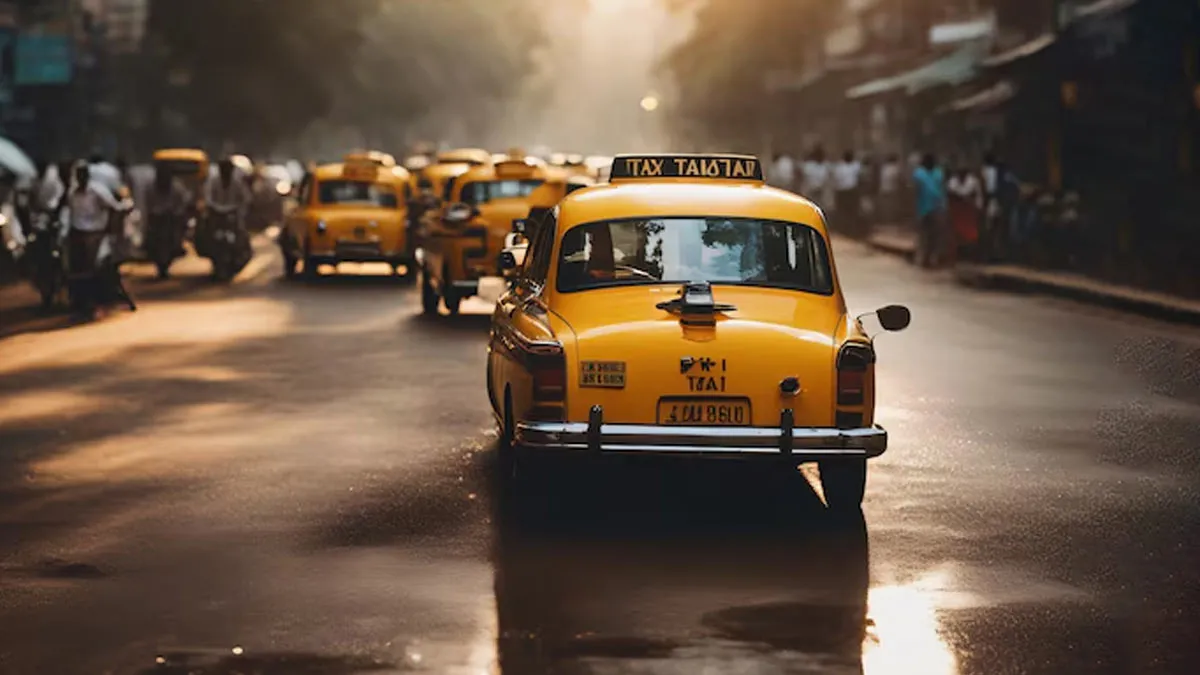Kolkata is synonymous with many things: delectable food, heavenly desserts, Rabindranath Tagore, the iconic Howrah Bridge, and, of course, its iconic yellow taxis. However, the winds of change have swept through the City of Joy. With the rise of app-based cab services like Ola and Uber offering convenience and accessibility, the iconic yellow taxis are gradually fading from Kolkata’s streets—a poignant shift for a city so deeply connected to them. As we bid farewell to this cultural emblem, let’s take a moment to honour its legacy by looking back at its remarkable history.
Kolkata Says Goodbye To Yellow Taxis
Kolkata is bidding farewell to over 4,493 iconic yellow taxis this year as they surpass the 15-year service limit, according to several media reports. The growing popularity of app-based cab services like Ola and Uber, coupled with financial challenges faced by taxi operators, has led to the decline of these once-beloved vehicles.

By the end of this year, over 4,000 yellow taxis will be phased out, making way for newer vehicles. Additionally, rising operational costs and difficulties in securing loans have further strained traditional taxi businesses, accelerating this inevitable shift in Kolkata’s transportation landscape.
The History Of Yellow Taxis
The iconic yellow taxis of Kolkata are a timeless part of the city's identity, originating in the early 20th century during British rule when hand-pulled rickshaws and horse-drawn carriages were the norm. By the 1940s, motorised taxis catered to the affluent class.
Don't Miss:IRCTC's Golden Chariot Train: New Features, Routes, Prices, and More
In the 1950s-60s, Hindustan Motors' Ambassador cars became the preferred choice for taxis due to their durability and suitability for Kolkata's bustling streets. The yellow colour, chosen for its visibility, became their defining feature. Declared a heritage mode of transport in 2013, these taxis have long served the people of Kolkata with reliability.

Although Hindustan Motors ceased production in 2014, modern cars like the Hyundai Xcent have replaced the Ambassadors while preserving the iconic yellow livery. Even as transportation evolves, Kolkata’s yellow taxis remain a cherished and nostalgic emblem of the city.
Other Iconic Vehicles Of Kolkata
As Kolkata bids farewell to its iconic yellow taxis, it’s a poignant reminder of other vehicles that were once integral to the city’s charm but now belong to history. Among them is the tram, which recently ended its 150-year journey in October 2024, discontinued due to traffic congestion and the demand for faster transportation. However, a single route between Esplanade and Maidan will remain operational to preserve its legacy.

Hand-pulled rickshaws, another cultural symbol of Kolkata, have not been officially discontinued but are gradually being replaced by faster options like e-rickshaws and bike cabs. Yet, these rickshaws can still be spotted in the alleys of North and Central Kolkata, keeping a piece of the city's tradition alive.
Don't Miss:Tejas Express: Key Features, Routes, Timings, Fares, Booking Rules, and More
While change is inevitable, these iconic modes of transport will always hold a special place in the hearts and memories of Kolkata's residents and admirers alike.
Image Credits: Freepik & Unsplash
If you liked this story, then please share it. To read more such stories, stay connected to HerZindagi.

Take charge of your wellness journey—download the HerZindagi app for daily updates on fitness, beauty, and a healthy lifestyle!


Comments
All Comments (0)
Join the conversation